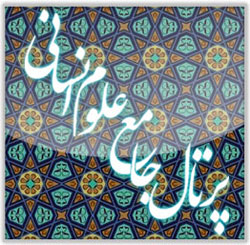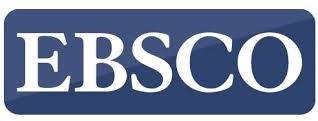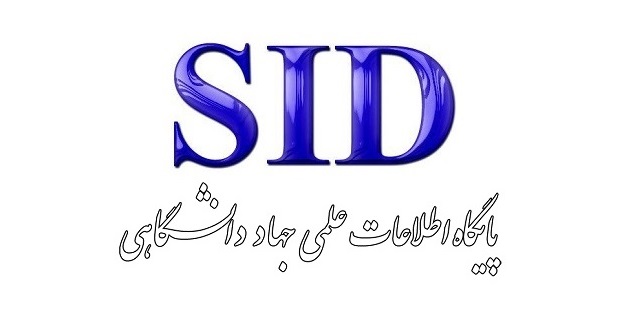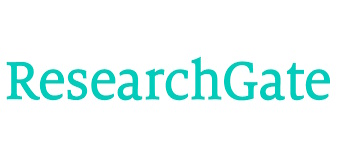سنجش تطابق هویت مجازی و هویت حقیقی در ایران: ارزیابی چالشها
کلمات کلیدی:
هویت مجازی, هویت واقعی, تناقض هویتی, فضای مجازی, چالشهاچکیده
ظهور فضای مجازی بهعنوان بخشی جداییناپذیر از زندگی روزمره، چالشی نوین را برای هویت افراد پدید آورده است. تناقض میان هویت مجازی و هویت واقعی یکی از پدیدههای پیچیده در عصر دیجیتال بهشمار میرود که پیامدهای گستردهای در سطوح فردی، اجتماعی و فرهنگی به همراه دارد. این مطالعه با هدف بررسی این چالش و ارائه راهکارهایی برای مدیریت آن انجام شده است. پژوهش حاضر از روش فراترکیب و تحلیل تطبیقی بهره گرفته و مطالعات مرتبط با این موضوع را در بازه زمانی ۲۰۱۰ تا ۲۰۲۴ بررسی کرده است. منابع مورد استفاده شامل مقالات علمی-پژوهشی، مقررات بینالمللی، و تجربیات کشورهای پیشرو در مدیریت هویت مجازی بودهاند. چارچوب نظری تحقیق مبتنی بر نظریههای گیدنز، تاجفل و کاستلز تنظیم شده است. یافتهها نشان میدهند که عواملی چون ناشناسبودن، انعطافپذیری و چندگانگی در محیطهای مجازی موجب شکلگیری تناقض میان هویت واقعی و هویت مجازی میشوند. این تناقضها پیامدهایی روانشناختی مانند اضطراب و کاهش اعتماد به نفس، پیامدهایی اجتماعی مانند کاهش اعتماد عمومی و انسجام اجتماعی، و پیامدهایی فرهنگی نظیر تضعیف هویت ملی و گسترش شکاف نسلی در پی دارند. بر اساس تحلیل تطبیقی، تجارب کشورهایی مانند استونی، اتحادیه اروپا و چین نشان میدهد که بهکارگیری فناوریهای نوین (مانند بلاکچین و هوش مصنوعی)، تدوین مقررات جامع همچون GDPR، و ارتقاء سطح آموزش عمومی میتواند به مدیریت مؤثرتر این چالش کمک کند. در زمینه ایران، توسعه سامانههای شناسایی دیجیتال، تدوین قوانین جامع حریم خصوصی، و ترویج محتوای فرهنگی بومی پیشنهاد میشود. مدیریت تناقض هویتی مستلزم رویکردی چندبُعدی و تلفیقی است که ابعاد فناورانه، سیاستگذاری و فرهنگی را دربرگیرد. اجرای این راهکارها میتواند به کاهش آثار منفی فضای مجازی بر هویت فردی و اجتماعی کاربران ایرانی یاری رساند.
دانلودها
مراجع
Alharbi, A., Dong, H., Yi, X., & Khalil, I. (2021). Social Media Identity Deception Detection: A Survey. Acm Computing Surveys, 54(3), 1-35. https://doi.org/10.1145/3446372
Binns, R. (2018). Artificial Intelligence and Privacy. Journal of Ethical Technology, 109-115.
Castells, M. (2001). The Rise of the Network Society Translated by Aliqian and Khakbaz. Tarh-e-No Publishing. https://books.google.com/books/about/The_Rise_of_The_Network_Society.html?id=hngg4aFtJVcC
Castells, M. (2010). The Power of Identity. Wiley-Blackwell. https://doi.org/10.1002/9781444318234
Dobbs, S. (2018). Connected: Social Media Use and Quality Family Time. California State University. https://scholarworks.calstate.edu/concern/theses/tx31qm79n
Dworkin, J., Rudi, J. H., & Hessel, H. (2018). The state of family research and social media. Journal of Family Theory & Review, 10(4), 796-813. https://doi.org/10.1111/jftr.12295
European Commission. (2018). General Data Protection Regulation (GDPR). European Union. https://gdpr-info.eu/
Giddens, A. (1991). Modernity and Self-Identity: Self and Society in the Late Modern Age. Polity Press. https://books.google.com/books?id=Jujn_YrD6DsC&source=gbs_navlinks_s
Giddens, A. (2005). The Consequences of Modernity Translated by Mohsen Salasi. Nashr Markaz. https://books.google.com/books/about/The_Consequences_of_Modernity.html?id=C46N9wtBI0gC
Giddens, A. (2007). Sociology Translated by Hassan Chavoshian. Ney Publishing. https://books.google.com/books/about/Sociology.html?id=vKifQgAACAAJ
Hall, S. (1987). Minimal Selves In Identity: The Real Me (ICA Document 6). Institute for Contemporary Arts.
Held, D., McGrew, A., Goldblatt, D., & Perraton, J. (2002). Globalization and Global Transformations Translated by Morad Ali Sedoughi. Center for Strategic Research of the Presidential Office. https://books.google.com/books/about/Global_Transformations.html?id=7Et0QgAACAAJ
Jenkins, R. (2004). Social Identity. Routledge. https://doi.org/10.4324/9780203463352
Katz, J. E., & Rice, R. E. (2002). Social Consequences of Internet Use: Access, Involvement, and Interaction. MIT Press. https://doi.org/10.7551/mitpress/6292.001.0001
Khelghati, M. (2008). Crises of Virtual Identities in the Anonymity of Chat Rooms. Crisis Management Course, Faculty of Social Sciences, University of Tehran,
Memar, S., Adlipour, S., & Khaksar, F. (2012). Virtual Social Networks and Identity Crisis (With Emphasis on Iran's Identity Crisis). Social Studies and Research in Iran, 1(4), 155-176. https://jisr.ut.ac.ir/article_36574.html?lang=en
Mousavinejad, M., Zarean, M., & Kaboli, M. (2021). Modeling Internet Addiction Based on Identity Styles and Academic Performance: The Mediating Role of Depression. Social Psychology Research, 11(44), 73-92. https://www.socialpsychology.ir/article_145803.html?lang=en
Pempek, T., Yermolayeva, Y. A., & Calvert, S. L. (2009). College students' social networking experiences on Facebook. Journal of Applied Developmental Psychology, 30, 227-238. https://doi.org/10.1016/j.appdev.2008.12.010
Praprotnik, T. (2004). How to Understand Identity in Anonymous Communication? www.hsd.hr/revija/pdf/1-2-2004/01-praprotnik.pdf
Rafi, H., & Abbaszadeh Marzbali, M. (2019). Challenges of Globalization and Virtual Space for Iranian National Identity. Strategic Studies Quarterly, 11(2), 85-100.
Shahabi Anbaran, B., Jafari, A., Hashemi, S., & Soltanifar, M. (2023). Dual Identities in the Virtual-Real Space of Adolescents (Case Study: High School Students in Ardabil Province). Cultural Communication Studies Quarterly, 24(61), 33-64. https://www.jccs.ir/article_165084.html?lang=en
Tajfel, H., & Turner, J. C. (1979). An Integrative Theory of Intergroup Conflict In W. G. Austin and S. Worchel (Eds.), The Social Psychology of Intergroup Relations. Brooks/Cole.
Turkle, S. (1995). Life on the Screen: Identity in the Age of the Internet. Simon & Schuster. https://books.google.com/books/about/Life_on_the_Screen.html?id=qMjaAAAAMAAJ
Turkle, S. (2011). Alone Together: Why We Expect More from Technology and Less from Each Other. Basic Books. https://psycnet.apa.org/record/2011-02278-000
Zhao, J., & Fan, X. (2018). Blockchain-based digital identity: Current developments and challenges. Journal of Blockchain Research, 4(2), 85-95.
دانلود
چاپ شده
ارسال
بازنگری
پذیرش
شماره
نوع مقاله
مجوز
حق نشر 2025 علی اشرف نظری, عباس تاجیک (نویسنده)

این پروژه تحت مجوز بین المللی Creative Commons Attribution-NonCommercial 4.0 می باشد.








